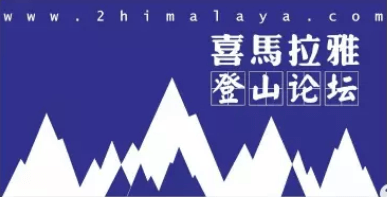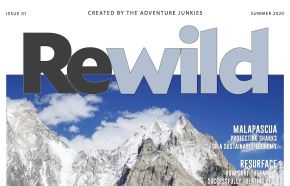General
Mera Peak Climbing (2025-26)
Take on the ultimate Himalayan challenge Mera Peak Climbing. Climb one of Nepal’s highest trekking peaks, surrounded by stunning views of Everest, Makalu, and Cho Oyu. Prepare for a thrilling experience that will push your boundaries while rewarding you with breathtaking sights.
Including our Mera Peak Climbing, we offer the following trekking options in Nepal, given in the table below.
| Trekking in Nepal | Cost (USD) | Cost (EUR) |
|---|---|---|
| Everest Base Camp Trek (16 Days) | 2700 | €2,700 |
| Manaslu Circuit Trek (15 Days) | 1500 | €1500 |
| Kanchenjunga Base Camp Trek (22 Days) | 2200 | €2,200 |
| Makalu Base Camp Trek (20 Days) | 2900 | €2,900 |
| Annapurna Circuit Trek (14 Days) | 1200 | €1,200 |
| Annapurna Base Camp Trek (14 Days) | 1100 | €1100 |
| Upper Mustang Trek (17 Days) | 2100 | €2,100 |
| Everest Basecamp and Island Peak (20 Days) | 4000 | €4,000 |
| Mera Peak Climbing (19 Days) | 2400 | €2,400 |
| Lobuche Peak Climbing with Everest Base Camp Trek (18 Days) | 2200 | €2,200 |
| Gokyo Lake Renjo La Pass Trek (14 Days) | 1400 | €1,400 |
| Pisang Peak Climbing (19 Days) | 3200 | €3,200 |
| Everest Base Camp Trek With Gokyo Lakes (18 Days) | 2400 | €2,400 |
| The Three Passes Trek (20 Days) | 2400 | €2,400 |
| Tengboche Monastery Trek (10 Days) | 1200 | €1,200 |
| Ama Dablam Base Camp Trek (13 Days) | 1600 | €1,600 |
| Everest Three High Passes Trek (20 Days) | 2400 | €2,400 |
| View all TOP TOURS IN NEPAL | - | - |
| View all HELICOPTER TOURS IN NEPAL | - | - |
| Trekking in Nepal | Cost (USD) | Cost (EUR) |
Dates & Cost – Mera Peak Climbing
Summers are ideal for the Mera Peak Climbing. The start and end dates in the table below are your arrival and departure dates from Nepal. The months mentioned below are ideal for trekking in the Himalayas region of Nepal. We have guaranteed departures every year that operate until October. Our dates and costs are noticeable below.
| Start Dates | End Dates | Price (USD) | Availability | Deposit | Registration |
|---|---|---|---|---|---|
| 20-Jun-2025 | 08-Jul-2025 | US$ 2,400 | Limited Space | US$ 260 | BOOK NOW |
| 20-Jun-2026 | 08-Jul-2026 | US$ 2,400 | Available | US$ 260 | BOOK NOW |
| Start Dates | End Dates | Price (USD) | Availability | Deposit | Registration |
Itinerary – Mera Peak Climbing
The itinerary for Mera Peak Climbing is noticeable below.
Day 02: Free day for trekking and climbing preparation
This day is dedicated to the last preparations for the journey and climbing. You will be focused on examining your gear and packing the appropriate items. You may leave all unneeded possessions at the hotel and repack only the items required for the journey.
Day 03: Fly to Lukla, Trek to Paiya (2,730m/8,956ft)
Duration: 5-6 hours
Your guide will pick you up from your Kathmandu accommodation and bring you to the airport for the Lukla flight. You'll see breathtaking vistas of valleys and peaks as you soar into the azure sky.
When you arrive at Lukla Airport, which is famed for its exhilarating runway, you will begin your journey to Paiya. The walk continues through Juniper and Rhododendron forests to Surke, from whence you will continue to Pakhapani for lunch. As you continue, you'll pass via Chutok La pass and traditional settlements before arriving at Paiya, a tiny community with stunning views of Khatang, Tang Ragi Tu, Kongde Ri, and other spectacular peaks.
Day 04: Paiya to Panggom (2,846m/9,337ft)
Duration: 5-6 hours
Starting at Paiya, the walk leads down to a wooden bridge. Be cautious on the treacherous path to Kari La Pass. Stop at a community for lunch after traveling through the rhododendron woodland. The narrow pathways provide beautiful views of the valley and Dudh Kund Himal. Arrive at Panguam, a small rural village with pleasant residents.
Day 05: Panggom to Ningsow (2,863m/9,393ft)
Duration: 4-5 hours
We begin our journey after breakfast. After leaving Panggom, we cross the Panggom La pass. Then we rise, stroll along a steady road, and turn north. We cross Peseng Kharka Khola first, then walk for some time to Peeng Kharka Danda. We cross Ningsow Khola (stream) before arriving at Ningsow Village.
Day 06: Ningsow to Chhatra Khola (2,800m/9,186ft)
Duration: 7-8 hours
From Ningsow, we ascend first, then drop and climb again to reach Ramailo Danda. From here, we get spectacular views of Mera Peak and Salpa. After rising and descending our trail, we enter Makalu Barun National Park. Our path from here to Chhatra Khola is known as the Pasang Lhamu trail.
Day 07: Chhatra Khola to Kothe (3,691m/12,109ft)
Duration: 6-7 hours
We go north along the main trail to Mera Peak. After walking along a track close to the Majang Khola, we join another trail that runs beside the Hinku Khola. Our route leads straight ahead to Tashing Ongma, which features seasonal tea stores. We continue our journey, crossing the Sanu Khola bridge before arriving at Kothe.
Day 08: Kothe to Thaknak (4,358m/14,297ft)
Duration: 3-4 hours
We go up the Hinku Khola ridge under the shadow of Mera Peak. We have lunch in Gondishung, a summer herders' village on the west bank of the Hinku Drangka. Beyond Gondishung, we cross the 200-year-old Lungsumgba Gompa, where Mera Peak and the road to Mera are carved in the rock.
A short hike brings us to Thaknak, a summer grazing region with rudimentary cabins and stores.
Day 09: Thaknak to Khare (5,045m/16,486ft)
Duration: 2-3 hours
Leaving Thaknak, we follow the lateral moraine of Dig Glacier to Dig Kharka, which has breathtaking views of the Himalayas. The path ascends across moraines to the snouts of the Hinku Nup and Shar Glaciers, then rises sharply to Khare. From here, we can view the northern face of Mera Peak, which will be an incredible experience. After lunch, we can go hiking in and around Khare.
Day 10: Khare - Acclimatization and pre-climbing training
Acclimatization day: Rest and explore the surroundings.
Pre-Climb Training: Following lunch, our guides will instruct you on peak climbing methods and how to use climbing gear such as an ice axe, climbing boot, crampons, harness, ascender, and so on, as well as how to climb and descend using ropes. Please keep in mind that training experience is not required for Mera, although a little training does boost the odds of successfully ascending the peak and enjoying the adventure.
Day 11: Khare to Mera High Camp (5,780m/18,958ft)
Duration: 6-7 hours
To get to Mera Peak Base Camp, we go along a boulder-strewn route on a steep track. From here, we proceed via the Mera La pass to the Mera High Camp.
Our journey follows a rough terrain, which can be dangerous if it has just snowed, as there are multiple crevasses here. We make our way to the summit of the rock band, which is identified by a big cairn. Then we put up a high camp with breathtaking views of Mt. Everest, Makalu, Cho Oyu, the south face of Lhotse, Nuptse, Chamlang, and Baruntse.
Day 12: Mera High Camp to Summit (6,461m/21,1907ft), return to Khare
Duration: 8-9 hours
Today, the entire staff gets up at 1 a.m. to prepare. The climbers had to get up at 2.30 a.m. We have breakfast and put on crampons and rope. Then we begin our climb to the peak. The climb to Mera's peak takes around 4-6 hours.
From the peak, we can enjoy beautiful views of Mt. Everest (8,848m), Cho-Oyu (8,210m), Lhotse (8,516m), Makalu (8,463m), Kanchenjunga (8,586m), Nuptse (7,855m), Chamlang (7,319m), Baruntse (7,129m), Ama Dablam (6,812m), Kangtega (6,779m), and many more.
We then retrace our ways down to high camp. After a respite and some hot soups/tea, we proceed to Khare for the night.
Day 13: Reserve day for Contingencies
We cannot promise that the weather will be fair on our scheduled summit day (day 12). So, this day is reserved in case we are unable to climb Mera Peak on day 12 owing to inclement weather or other reasons. If the weather turns bad, we should postpone our summit-climbing plans. Sometimes you or your group members may have difficulty acclimating. This Day may be utilized in the case. If the journey goes smoothly, we won't need this extra day.
Day 14: Khare to Kothe (3600m/11808ft)
Duration: 4-5 hours
We leave the highlands and head to Tangerang. We proceed towards Kothe.
Day 15: Kothe to Thuli Kharka (4,300 m/14,107ft)
Duration: 5-6 hours
We travel back to Thuli Kharka. The walk provides breathtaking vistas of alpine nature, including huge rhododendron woodland.
Day 16: Thuli Kharla to Lukla via Zatrwa La Pass
Duration 6-7 hours
Today we are heading to Chutenga. The path ascends till we reach Zatrawala Pass, then falls until we reach Chutenga, and then continues straight ahead to Lukla Village.
Day 17: Flight to Kathmandu
After flying back to Kathmandu, you will be transported to your central hotel. The remainder of the day is free for touring or shopping in the streets and bazaars of Nepal's capital. This evening, we'll enjoy a celebration feast and reminisce on our Mera Peak experience.
Day 18: Leisure day in Kathmandu
Spend the day in Kathmandu, either resting or exploring, according to your preferences. Overnight at the hotel with breakfast included.
Day 19: Fly to home country
An Apricot Tours representative will transport you to the airport around 3 hours before your planned departure. If you have extra time, you can go shopping or sightseeing.
Why Register Early?
1. Early Bird Discount: The given prices for the holiday are limited-time discount offers and are subject to change. Service providers including (but not limited) to airlines and hotels increase prices in peak-season. Early reservations cost less than peak-season.
2. Limited Flight Seats: Domestic flight seats to the Himalayas are sold out way ahead of time because there are only two daily flights during peak season. Among other things, the deposit is used to book domestic flights for you in advance.
3. Pay Balance after arrival in Nepal: In these unusual times, we appreciate that paying the final balance for your trip may cause concern. Our policy is to only receive your final balance once you arrive in Nepal. The only payment before arrival is the deposit.
4. Deposit valid for 3 years: We understand the uncertainty surrounding the pandemic (Covid-19). As part of our relaxed booking conditions following Covid-19, deposits are valid for 2 years.
6. Pay Minimum Deposit: The deposits for the holiday are also early-bird discounts and automatically change accordingly:
- 1st October: USD 190
- 1st November: USD 290
- 1st January: USD 350
- 15th February: USD 400
- 1st March: USD 450
- 1st May: USD 490
Note: The same dates above apply to next season's deposits.
Refund Policy for All
Deposit: Once paid, the deposit is non-refundable (but valid for 2 years) as it will be spent on making in-country arrangements.
Balance: Pay the balance only after arrival in Nepal on the first day. Payment guidelines will be shared timely.
Currency
All international travelers can pay in US Dollars (USD) or equivalent in Euros (EUR) or Pound Sterling (GBP). Nepali travelers are charged the equivalent of Nepalese Rupees (NPR).
Single Supplement
Separate hotel rooms (single supplement) will cost an additional USD 290. This includes all hotel nights. This payment should be made with the balance upon arrival.
Separate tents (single tent) will cost an additional USD 180. This includes the cost of additional porterage. This payment should also be made with the balance in Nepal.
Photo Gallery – Mera Peak Climbing
Overview – Mera Peak Climbing
Mera Peak is commonly referred to as Nepal’s highest hiking peak. Because the ascent is less challenging, there is an 80% success probability of reaching the top. Every year, thousands of trekkers and climbers prepare for and complete the ascent. The rugged topography, the gushy river flow, and the surrounding peaks will leave you in amazement.
First, you’ll arrive at Tribhuvan International Airport, where our personnel will meet and accompany you to your accommodation; next, a rest day will be scheduled so you may prepare for the walk and shop for some supplies.
We’ll start the morning with a flight from Kathmandu to Lukla. From Lukla, we’ll walk to Paiya and then to Panggom. The climb continues via Ningsow, Chhatra Khola, Kothe, Thaknak, and Khare. Throughout the trip, appealing wildlife elements such as lush woods, rocky pathways, and rivers will keep you occupied. We’ll spend the day in Khare acclimatizing and preparing for the ascent. After training, you’ll be prepared for the ascent. From Khare, we will rise to Mera High Camp, passing via Mera Base Camp. We’ll stop for the night in Mera High Camp before beginning our trek. The ultimate day awaited everyone, the last summit of Mera Peak.
The views from Mera High Camp are breathtaking and beyond one’s imagination. You can see Mt. Everest, Makalu, Cho Oyu, and Lhotse. Later, you will ascend to Khare, Kothe, Thuli Kharka, and finally Lukla via Zatrwa La Pass. From Lukla, we’ll travel back to Kathmandu and say goodbye to the Himalayas.
Our Trekking guides and climbers are seasoned specialists with many years of service. With their support, you can undoubtedly achieve and brag about reaching a summit of 6476m. Join us and submit an inquiry so that we can take you along the trail of the magnificent Mera Peak.
Website Last Updated: October 29th, 2024




















